This is a free fortnightly newsletter about the New Zealand Net.
If you would like to be notified by email when a new edition is published, please contact ZL1NZ.
Browse our Newsletter Archive and List of Net Tips.
Featured key

The new Titan straight key. Photos: W1SFR
In NZ Net News 43 I featured the torsion keys made by Steve Roberts W1SFR in Vermont. Steve has just released a new series, called Titan, and they are so beautiful I wanted to show them to you. Here’s what Steve says about them:
 “In the making for over a year, I finally had time to finish the designs for my new Titan Sideswiper, Straight Key and Paddle. They feature a massive stainless steel base (over 1.3kg) with a decorative border milled into the surface, and a very high quality 3.5mm jack built into the base.
“In the making for over a year, I finally had time to finish the designs for my new Titan Sideswiper, Straight Key and Paddle. They feature a massive stainless steel base (over 1.3kg) with a decorative border milled into the surface, and a very high quality 3.5mm jack built into the base.
“All keys are available with or without callsigns. All keys come with a very cool 76cm retractable cable and the Paddle includes a stereo to mono adapter to change the key into a cootie on the fly.”
The Titan Sideswiper/Paddle costs US$334 and the Straight Key costs US$356 plus shipping.
* If you have an interesting key for this feature, please send me a nice clear photo and a few words describing it.
Quick notes
 Some talented CW ops can key with one hand while writing with the other. But handling a gun while keying – as in this magazine artwork – must be quite a rare skill!
Some talented CW ops can key with one hand while writing with the other. But handling a gun while keying – as in this magazine artwork – must be quite a rare skill!
Good luck to all our NZ Net operators dealing with the massive rains and flooding we’ve been experiencing the past few days across the country, and especially in the Tasman region.
Congratulations to Gerard ZL2GVA for another fine article in the latest edition of Break-In, this one about the software that lets you easily convert your paper log into electronic form, as is being requested by more and more contests.
Remote ham stations can get you into trouble if you’re not careful. In the latest edition of QNI there’s a report on a US ham’s remote station, in a far-away holiday home, that went key-down – for weeks. The ham knew he’d lost his internet connection to the rig but didn’t realise he was putting out a continuous carrier on 7033 even though hams in half the country could hear it. Finally the FCC tracked down the transmitter and got it switched off. Moral of story: monitor your remote station and make sure you have a way to disable it that does not rely on the remote control system. In this case, the FT-991 survived, as it had been set to just 25W output.
This story reminded me an advertisement from the late 1970s, which I’ll put at the end of this newsletter.
Photo flashback
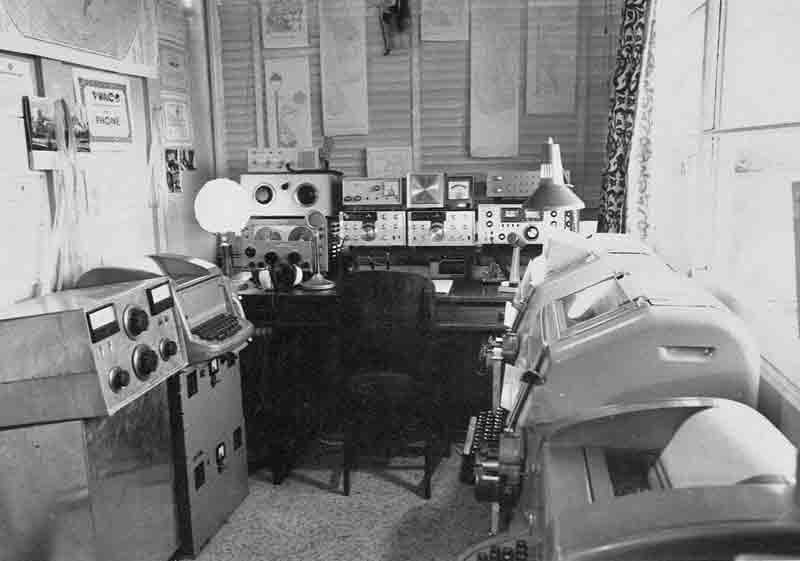
The impressive shack of Lee Jennings ZL2AL (SK) in 1981
Slow-speed CW event for Oceania
 By Garry VK2GAZ/VK2ZP
By Garry VK2GAZ/VK2ZP
SKCC-OQS Manager
The Straight Key Century Club (SKCC) has been offering contests and events to its members for many years but these have been mostly US- and European-centric.
SKCC is pleased to introduce an event which is primarily for its Oceania members, mainly Australia and New Zealand. The event will be run every third Saturday of the month commencing in September 2022.
You are invited to participate in the inaugural Oceania QRS Saunter (OQS) which will take place on Saturday 17 September, starting at 00.00 UTC and continuing until 23.59 UTC.
The OQS aims to bring together operators at a slower CW pace (12 WPM or less) with a specific focus on our members in Oceania. This is an informal non-contest. Please feel free to join in at any time during the 24-hour period.
All details can be viewed on the SKCC website.
I hope you will be able to take part in the event and help foster Morse Code. If you have any questions concerning this event please email me.
Editor’s note: Membership in SKCC is open to all radio amateurs and is free of charge. When you join, you will be issued an SKCC number which you can use in contacts with other members.
Morse musings: Conversational contacts
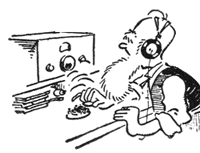
The opinion of ZL1NZ
Or maybe you’re a bit luckier, and you actually get as far as telling them your weather conditions or your rig (the two safest topics in ham radio!). You might get a minimal reply. Then, before you know it, it’s “TKS QSO 73 dit dit”.
Sometimes, after one of these frustratingly brief contacts, I will look up the other operator on qrz.com. Often they have posted quite a bit of information on their page that leads me to think we could have had a good chat. Maybe they had an interesting career, or have travelled, or built all their own gear. Even something as innocuous as a photo of their pet could have been a conversation topic!
It makes me wonder whether such hams realise that CW can actually be used to communicate – not just to gain contest points or a new country for DXCC.
When I got another “5NN TU” a few days ago on 80m, I got to thinking about what we might be able to do that would encourage more conversational contacts.
1. Do we need a special sort of CQ that means “I’d like to have a conversation”?
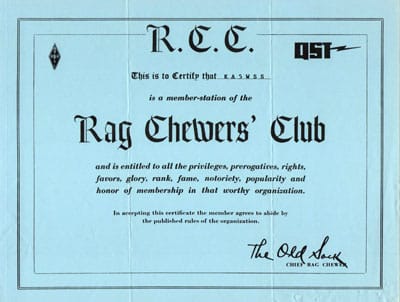 2. Should we revive the Rag Chewers’ Club? For those who don’t remember, the ARRL used to offer an RCC certificate when you reported your first contact lasting more than 30 minutes. The League abandoned it many years ago, and another group (the Society for the Preservation of Amateur Radio) tried to keep it going, but they now seem to have disappeared. Maybe NZART or FISTS would like to consider this?
2. Should we revive the Rag Chewers’ Club? For those who don’t remember, the ARRL used to offer an RCC certificate when you reported your first contact lasting more than 30 minutes. The League abandoned it many years ago, and another group (the Society for the Preservation of Amateur Radio) tried to keep it going, but they now seem to have disappeared. Maybe NZART or FISTS would like to consider this?
3. Can we do things that encourage conversations? For example, instead of saying “WX CLDY ES 22C”, say something like “WX HAS BEEN WET BUT GARDEN IS THRIVING = JUST PICKED SOME BEANS TODAY”. That then opens up some possibilities for response. It doesn’t always work though – you might still get “OK TKS ES 73” or “SRI QSB QRM QRN MUST GO”. (Sigh)
4. We can try asking questions to show that we’re interested in what the other operator has to say. But without a bit of give-and-take, this can start to sound like an interrogation! I generally offer a very brief bit of information about myself, then ask a related question, and hope that conversational momentum builds.
5. If signals are good, I try to encourage conversational flow by not sending callsigns at the beginning and end of every transmission (while making sure that I identify at least every 15 minutes, as required by the regulations). Using full break-in would be the ideal approach, but that requires both stations to have the capability and be willing to use it.
Why are so many CW operators reluctant to engage in conversation?
I’d hate to think that people prefer “5NN TU” to an actual conversation, but I suppose that’s a possibility for some. Perhaps they get bored if a contact takes more than a few seconds or demands “too much” of them?
Or maybe it’s a heightened sense of privacy, born of the times in which we live. Like people on the internet who use screen names and avatars to conceal their identities.
In many cases, however, I suspect it’s a lack of CW confidence. If your only contacts have been “5NN TU” then a real conversation could be scary. You can often tell that this is happening, can’t you? As long as you’re just sending information, the other person says you’re ‘solid copy.’ But ask a question, and suddenly the copy isn’t so solid and you’re being asked for repeats. Those of use who handle traffic are used to asking for and giving ‘fills’ but other ops might be embarrassed or unsure how to do it. When I sense the other op isn’t copying me as well as I thought, I try to slow down a bit and keep the overs short, so the other person doesn’t feel trapped. When they’ve had enough conversational stress, they can choose to end the contact.
Do you have thoughts on this topic? Why not write a few lines and I’ll put them in the next newsletter. Or we could always have a conversation about it – on the air!
Cartoon: Gildersleeve
Morse challenge
Life in Australia changed forever when Sir Charles Todd’s Overland Telegraph Line opened in 1872. An extraordinary engineering feat, the line stretched 2839 km from Port Augusta to Darwin through the dry Australian outback.
The Australian Mint has issued a commemorative coin for the 150th anniversary of the line.
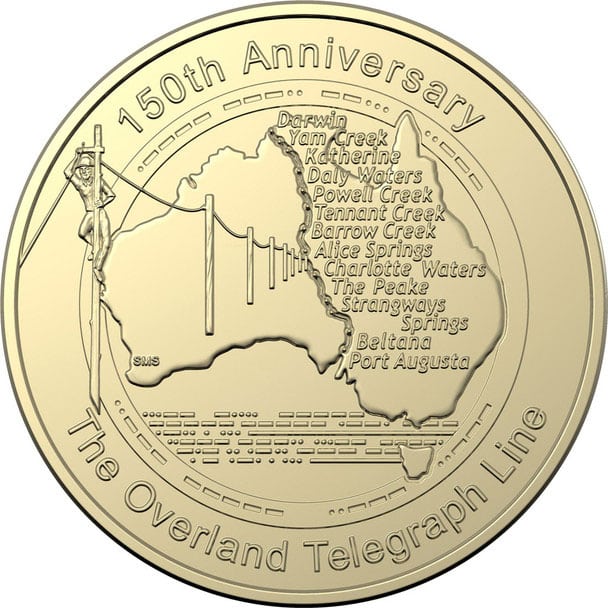
Your challenge is to tell me how many telegraph poles (approximately) were used in the line. You won’t need a search engine for this, because the answer is on the coin pictured above.
Please send your answer to me via radiogram, or via email if you don’t have propagation.
Answer to previous Audio Challenge
Three three types of people mentioned in the radiogram from ZL2WT were:
* HAPPY HOBBYISTS
* HUMBLE HOBBYISTS
* HARDUP HOBBYISTS
Correct answers were received from ZL1ANY, ZL1AYN, ZL1BWG, ZL2GVA and ZL3TK.
Video: Improve your bug or straight key sending
Net tip: What to do if your QNY QRG is QRL 🙂
Here’s how to efficiently handle a request to QNY (move to another frequency to pass traffic) when you find that the frequency you’ve been sent to is already in use.
Ideally, the Net Control operator will check 3535 kHz +/- 5 kHz before starting the net and, if they have a bandscope, they will keep an eye on that frequency range while running the net.
But, it can still happen that you discover activity on the frequency to which you have been despatched. In this case, I recommend that you keep going in the same direction to the first clear frequency, send your QRL? and, if no response, call your station.
An easy way to think of it is like this:
When NCS sends you U5 or D5 they really mean “go to the first clear frequency at least 5 kHz up/down.”
If both stations being sent QNY follow this approach, they should find each other pretty quickly. Obviously it’s only a rule-of-thumb as there could be good reasons not to keep going (e.g. a contest in progress, or limited space within the CW sub-band) so operators should decide what’s most appropriate in the situation.
And if you can’t find the other station, return to 3535 and tell NCS so that they can sort out an alternative.
Advertising archive
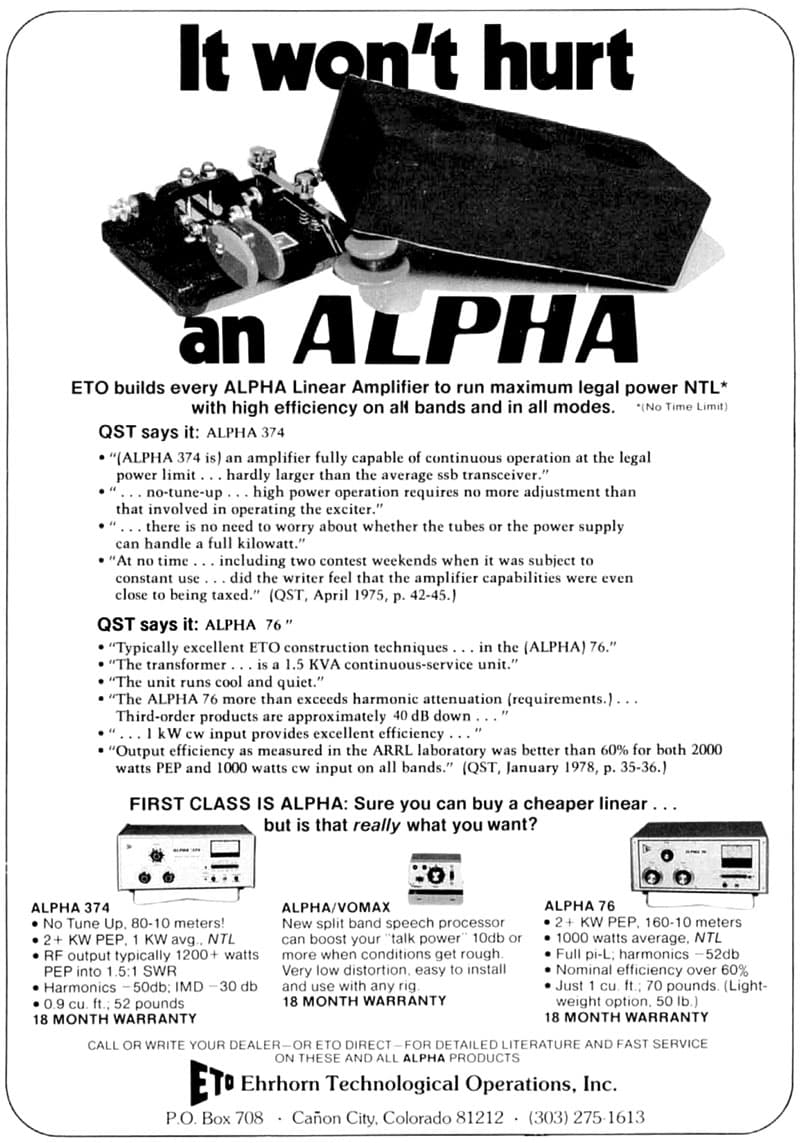
Ham Radio magazine, March 1978
Suggestions?
If you have suggestions on how to make the NZ Net better, or things you’d like to see covered in these updates, please contact ZL1NZ. You might even like to write something for the newsletter.
Thanks for reading, and I hope to hear you soon on the NZ Net!
—
Neil Sanderson ZL1NZ, Net Manager
New Zealand Net (NZ NET)
3535.0 kHz at 9pm NZT Mon-Fri



